#skinny membrane
Text
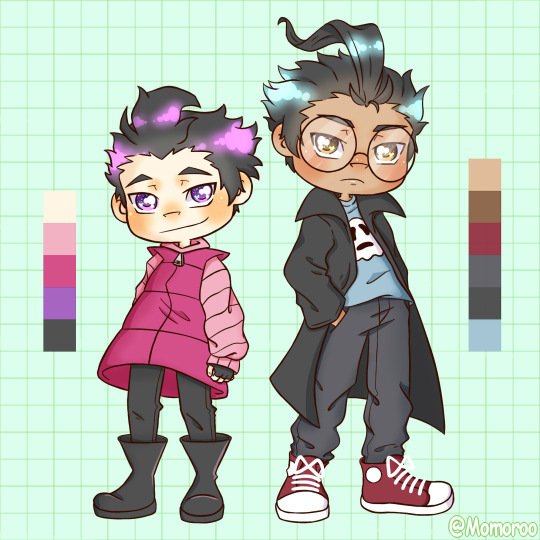
Invader Zim AU where everything is the same except Zim has a convincing human disguise and Dib is a snobby, smarter than-average-rich kid who- no, never mind. That last one is canon.
I was asked about the color palettes so I put them there. These are the same ones I use for everything else.
#I made the Dib slightly taller than Zim based on that he can age and grow up and Zim can't#Zim would be a skinny jeans type of kid#you know he would#there is no fan comic or fanfic for this I just wanted to design a human Zim#invader zim#zim#dib membrane#dib#fanart#invader zim fanart#chibi art#my art#human zim
20 notes
·
View notes
Text
Wed Beast Wednesday: Mudskippers
For this Wet Beast Wednesday I want to go over a fish that seems to have forgotten it's a fish: the mudskipper. Mudskippers are amphibious fish that are just as comfortable on land as they are in the water. Mudskippers are classified as gobies but goby taxonomy turns out to be weirdly complicated and there's not a clear consensus of what clade constitutes a goby. Mudskippers are members of the subfamily Oxudercinae and consist of at least 23 species, with some sources list up to 43 species. Not all members of Oxurdercinae are considered mudskippers, only those who live a partially terrestrial lifestyle. Mudskippers live in tropical to temperate regions throughout the Pacific, Indian and Atlantic oceans.

(image id: a mudskipper sitting on a branch just above the surface of the water. It is a long, skinny fish with a large head and two large eyes positioned on the top of its head. Its pectoral fins are large and its dorsal fins are folded up. The tail fin is submerged and not easily visible. It is mostly light brown, but has a black stripe going down the body and small, blue speckles all over.)
Mudskippers have a fairly standard goby body plan, but with adaptations to support their terrestrial lifestyles. The most important adaptations for a fish that wants to live on land is to develop an ability to oxygenate themselves without continuously passing water over the gills. Mudskippers have developed two ways to breathe out of water. The first is with their gills. The gill pouch can be sealed off, trapping a bubble of water inside, keeping their gills continuously in contact with water. The gill filaments are also stiffer than in most fish and do not coalesce with each other if they dry out. In addition, the skin, mouth, and throat can absorb oxygen with the help of many small blood vessels, but must be wet to do so. Mudskippers spend up to 3/4th of their time on land, but will die if they dry out. They live mostly in the intertidal zone, primarily on mangrove forests and mud flats, where they have access to water but also plenty of room to move and hunt on land. To assist in moving on land, the pectoral fins have evolved into pseudo-feet. The fins of most ray-finned fish are simple, consisting of a group of inflexible fin rays attached to the body that can be moved (individually in some species) by muscles in the body. Mudskippers have their fin rays jointed part way through and again at the connection to the body. This creates a "shoulder" and "elbow" joint in the fins, giving them greater strength and flexibility. Mudskippers can drag themselves along with their pectoral fins in a skipping motion, which is the source of their common name. Some species can use their pectoral fins to climb on mangrove roots or other exposed plants and rocks. Mudskippers are also adept jumpers. By rapidly folding and extending their tails, mudskippers can leap up to 61 cm (24 in). This is used primarily to escape predators and for display purposes, but may also be used to leap onto higher vantage points. Mudskipper eyes are also special. They are located very high on the head and protrude quite a bit from the body. This eye position gives the mudskipper a very wide range of vision and allows them to bury themselves in mud, only leaving the eyes exposed. Mudskippers can also blink, something other fish cannot do. To blink, a mudskipper will retract an eye into its body while a membrane called a dermal cup rises to cover the eye. Blinking allows the mudskipper to clean its eyes and keep them moist on land. Mudskippers are small fish, with the largest species (Periophthalmodon schlosseri, the giant mudskipper) getting to about 28 cm (11 in) long.
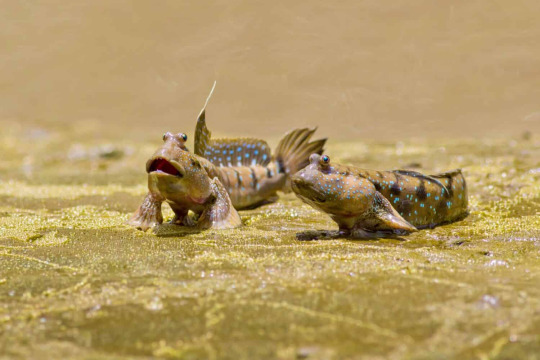
(image id: two mudskippers sitting on sand. one has its front end eld up by its pectoral fins and its mouth partially open. This one's dorsal fins are extended, which run down the body. The other one is lying flat had has its both closed and its dorsal fins folded down. They are light brown with dark stripes. The dorsal fin has many blue dots)
Mudskippers build burrows using their fins and mouths. These burrows are used for shelter and for mating. Most burrows will have their oepning exposed during low tide but will flood during high tide. A chamber in the burrow holds a pocket of air even when flooded. This allows the mudskipper to breathe even if the water is low in oxygen, though it must periodically bring in mouthfuls of air to refresh the pocket. During mating season, males will build burrows. after the burrow is completed, he will come out and start competing for mates. Competitions involve jumping, with the make who can jump the highest attracting the most females. Sometimes mudskipper will fight over territory, though males are especially prone to fighting during mating season. Fights consist of the fish demonstrating at each other with open mouths and raised dorsal fins. During fights, they will also vocalize at each other, with the one who can string together the most vocalizations being the winner. How mudskippers vocalize is still a mystery. Most fish who make sound do so with their swim bladders, but mudskippers don't have swim bladders. Once a female picks a male to mate with they will return to his burrow, where she lays eggs and he fertilizes them. The female departs afterwards, leaving the male to care for the eggs. He will guard the burrow against predators and bring air in to keep the eggs oxygenated until they hatch.

(image id: a mudskipper mid-jump. Its fins are all extended and its body is covered in blue spots)
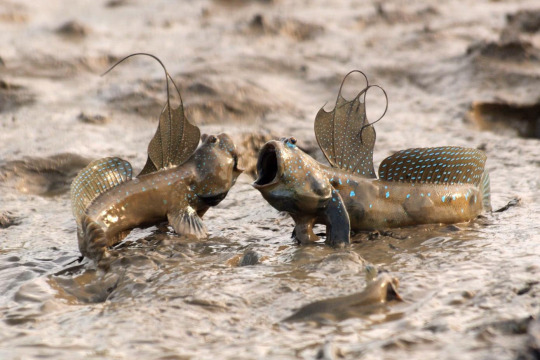
(image id: two mudskippers fighting. They are facing each other with mouths open, heads pointing up, and fins fully extended)
The majority of mudskipper species are carnivores, though some have transitioned to being detritivores. They hunt invertebrates including worms, insects, and crabs, and some species are cannibalistic. They can hunt both on land and in water, but are more effective at land hunting. When in water, mudskippers use the same suction feeding method that most predatory fish use. When on land, mudskippers use a different method. They carry water in their mouths and chase after prey. When positioned over their prey, the mudskipper will spit some of the water out, allowing it to cover the other animal. It then sucks the water back in, carrying the prey with it. The suction also help propel the prey to the throat, which is useful because mudskippers lack tongues to push their food back.

(image id: a mudskipper in its burrow.The entrance to the burrow is raised above the ground and made of sand. Only the mudskipper's head is visible)
Mudskippers are useful to science in a few ways. They are useful as bio-indicator for the health of their environments. Breathing through your skin is a double-edged sword. It lets you oxygenate on land, but also makes it easier for harmful chemicals to enter the body. Dissection of certain organs allows for testing of environmental chemical levels. Passive observation can also provide data on environmental health. Mudskippers are also used as a model organism for scientists studying the transition of vertebrates to land. While the fish that colonized land were lobe-finned fish as opposed to the ray-finned mudskippers, they can still provide clues to the adaptations and lifestyle of the earliest tetrapods. Outside of science, mudskippers are used for food and as pets. The different species had different classifications by the IUCN ranging from least concern to critically endangered. Their main threats are pollution, habitat loss, and overfishing.

(image id: two mudskipper facing the camera with their mouths open)
#wet beast wednesday#fish#fishblr#fishposting#mudskipper#marine biology#biology#zoology#ecology#animal facts#fish that forgot how to fish
291 notes
·
View notes
Text
From the depths
Written for the @steddiemicrofic challenge, October 2023 edition
Prompt: suck, 480 words
CW: Mild blood and gore; Drowning; References to murder; Monsters; Tentacles
Rated: M
Notes: It's October, I'm all up in my spooky shit

Eddie’s first thought as consciousness returns is that he’ll murder Jason fucking Carver.
He should have known something was off when the asshole asked to make the deal by Lovers’ Lake, shouldn't have walked into the forest. Because of course his goons were hiding somewhere to tinker with the van.
Eddie heaves a wrecking cough as the memories come.
The rear swerving off the dark road. The brake pedal limp under his foot. Hitting the water. The sickening vertigo as the van went under. Water rising in the footwell, weight pressing in. The noise as the windshield cracked.
The realization that he was gonna die.
"Shhhh, breathe."
A hand in his hair, a voice in his ear.
Air in his lungs.
Eddie's eyes open.
For a second, he thinks he died and went to heaven. Because hovering above him is the prettiest boy he's ever seen. He's ethereal in the moonlight - chiseled features, soft hair, smooth skin dotted in moles.
"Wha-?"
"Don't speak," smiles the boy. His voice settles over Eddie, calm and commanding. "Only just pulled you out."
He turns Eddie's head, probably to check for injuries? Eddie blinks as the surface of the lake swims into focus. Bubbles burst where the van disappeared.
"Fuck," he rasps, sitting up. "Looks like I'm walking home."
"No," coos the boy, and grips his hands. He's close, eyes very bright in the dark. They're hypnotic, like they're sucking him in. "Stay. It's been so long since I ate."
Eddie freezes. Because the boy has just put a hand to his face, and it's clammy and cold like the water. Because there's something spanning between his clawed fingers, something webbed like membranes.
Because the boy doesn't have legs.
His bare torso melts into a coiling mass of tentacles, slithering all around them, wrapping around Eddie’s limbs, cold and moist and choking and-
"Wait!"
The boy - the creature - blinks gleaming eyes at him. One clawed hand pulls Eddie's fingers up to plush lips. They are still bloody from pounding against the walls of the van. A too-long, too-pointed tongue darts out to drag them into a mouth full of sharp fangs and sucks the blood right off.
"You're hungry," Eddie smiles through his horror, tries to make it disarming. "I can get you food. Lots of food, way better than my skinny ass."
The boy releases his fingers with a wet pop.
"Continue."
Eddie frantically rambles on. "I know this big, meaty jock. Lots of muscle, very healthy. He should still be close, I can-"
One membraned hand grabs his jaw.
"Do not try to wiggle out of this. I've marked you. If I call, you'll come. And I'll feed. Are we clear?"
Eddie swallows. "Crystal. Now let me get you that snack."
Jason disappears on that night.
It's the first of many times Eddie feeds the boy from the lake.
Part 2
#steddie#steve harrington x eddie munson#steve x eddie#steddie brainrot#steddie fanfic#fanfiction writer#fanfiction#fanfic#my writing#steddie microfic#steddie microfic October#mer dude but make it spooky#murder boyfriends but one of em is a flesh eating lake creature or whatever#hype's microfics
287 notes
·
View notes
Text



kiddos from my sandwing royal family. details below the cut.
Anole: 4 years old
Super into politics. Mad that he’s not allowed to go to meetings and such. Snooty brat with no manners. Favors Uncle Brittlebrush.
Meerkat: 3 years old
Shy and sweet. Favors Uncle Ocotillo. Meerkat is a skinny little dragon who still hasn’t grown into her wings.
Caracal: 1 year old
Contracted a disease shortly after hatching that slowly rots the membrane of her wings. Those around her are struggling to cure it and it causes her mother a great deal of stress. Caracal doesn’t seem to mind. Caracal’s mother makes her wear a cape over her wings to hide the disease from the public.
Peppy. Would love to have bejeweled scales and makes up for it by painting certain spots on her face red.
#wof#wof oc#wof ocs#wings of fire#wings of fire oc#wings of fire ocs#sandwing#sandwings#sandwing oc#sandwing ocs#wof writing#wof oc art#oc art#my ocs#white bg#white background
55 notes
·
View notes
Text
Lugia's method of flight fucking ROCKS so i wanted to explore those cartoon bird hand-wings as a concept. TW for shitty anatomy tho

The retractable claw sits sideways on the finger and is below the skin, so it functions as the frame for membrane to sit for flight when extended. When retracted, it can function as a hand
An issue I kept running into though - I kept making them too buff. Too Swole. I keep forgetting how skinny pterosaur, bat, and bird arms really are, so I kept overshooting how much muscle should be on it. Even though biceps, triceps, the muscle On The Arm is useless in flight, it's all about the pectorals. Though, for this alien, maybe not, on account of still using their hands as hands? arm curls still might need to be done?



92 notes
·
View notes
Note
Back with another wyvern that I’ve always been fond of. The fell beasts from the lord of the rings. Big wyverns that are described as giant soaring scavengers, similar to a condor in lifestyle. I do find they have wings that are a good size but the shape always seemed off to me for some reason. It just seems like there is no muscle in those sticks of arms they have when compared to the rest of the body. Your thoughts on how the wings could be improved?




Included a figure which is very film accurate, a really good artistic depiction that shows the creature without any of the armor or saddle parts, and two screenshots I took from the movie that show the wing shape while fully extended. Artist is Greco Westermann on artstation for those that are curious.
they could lose the elbow strut and make the membrane between the elbow and wing more filled out. the deep chest shape is good for anchoring the wing muscles, ii think that part looks pretty good. as for the skinny shape of the wing arms, it's actually fairly accurate to how bat wings look!

(image desccription: a photo from beneath a flying bat, backlit in a way that shows its arms as dark shadows within the wing membrane. end description)
this photo is a flying fox, a very large species of bat, and you can see that the wing arms are still quite skinny! they do have some visible musculature, but actually most of the muscle strength required for flying is in the torso! back muscles, shoulders, and pectoral muscles. the LotR fell beasts seem to fit that anatomy just fine. I might have designed their feet differently, though. the toes seem oddly bulky compared to the rest of the leg.
sidenote: i do love the design of the riding gear, i think it looks pretty effective.
39 notes
·
View notes
Text

hi i drew the main trio as dragons because dragons are cool as hell and i like madness combat so im mashing my oldest fixation and current fixation together like mixing two different playdoh colors
also why is dragon hank so cutie patootie i tried to make him look badass but he just looks like O['']O
anyways design stuff under the cut
okay so i envision most if not all of the dragons in this AU having those hands on their wings, that they walk on to free up their front legs. sanford walks on his front legs more often, giving him an advantage in melee, and deimos walks on his wings more often to free up his hands to use his hands for holding firearms (because dragons with guns is a kickass idea). hank does both equally.
i tried to make sanford broader and more crocodilian (built like a mudwing from wings of fire, kinda) and deimos more lithe (yet still strong), aerodynamic and lizardlike. hank is the most like the typical dragon, but you cant see much of that under the clothes and bandages holding him together.
sanford and hank have thicker, leathery wings (though its more obvious for sanford than hank) while deimos has a batlike structure of skinny membranes that allow him to fly quicker. hank has the longest wing-spikes out of them all. his wings probably would be tattered to hell and back but i forgot to include that detail whoopsies
i considered giving each of them a unique tail end but i only came up with sanfords hook tail
deimos can breathe fire, in reference to his ability to make fire with his fingers in the main series. most dragons in this AU cant.
hanks metal jaw probably has metal tusks but i couldnt draw them right so i didn't include that,,,
#madness combat#madcom#sanford madness combat#sanford madcom#mc sanford#deimos madness combat#deimos madcom#mc deimos#hank j wimbleton#hank madness combat#hank madcom#mc hank#dragons
30 notes
·
View notes
Text
It's Time for Science! (Aka, I Think Bacteria Are Neat and Want to Show Off my Petri Dishes Like Cool Rocks):
Now, I know what you're thinking
This is K. pneumoniae, known for causing pneumonia, grown on MAC.
MAC, or MaConkey Agar is a type of growth material that changes color when bacteria ferment lactose, and it's used to identify gram negative organisms.
Well, bacteria have membranes that protect them from the environment, much like how we have skin.
"Starry, what the hecc are grams?"
Gram positive bacteria are bois that have Dummy Thicccccccc tm cell membranes
Gram negative bacteria are scrunkily lads that have skinny ass membranes
The bacteria above, K. pneumoniae is just one of these scrunkily lads
And when they're put on this type of media...
They make a really pretty sunset color
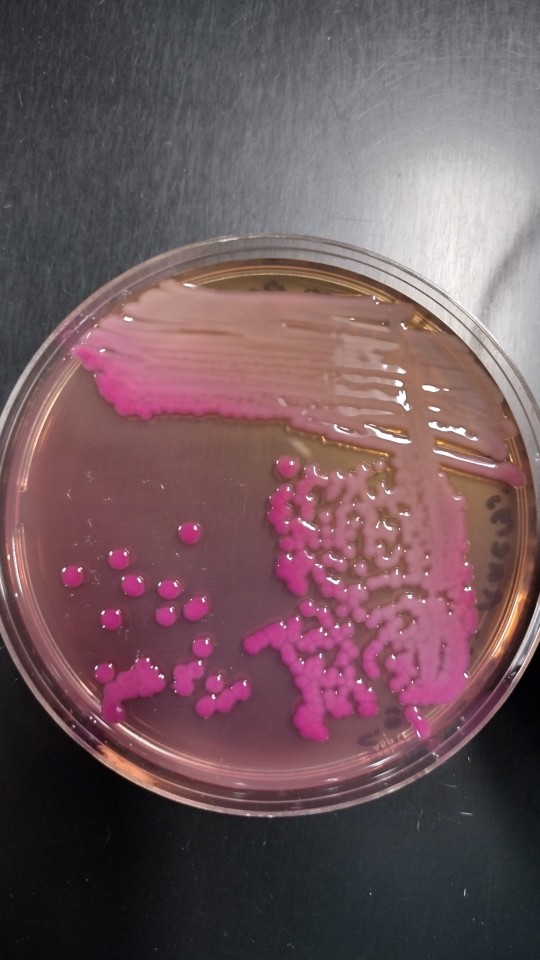
#starrytalks#goblincore#college#its the neurodivergency#bacteria are gross and dangerous but also really cool#bacteria#microbiology#microbiota#biology#cells#science#science side of tumblr#bacterial cells
414 notes
·
View notes
Text
Immune system go brr
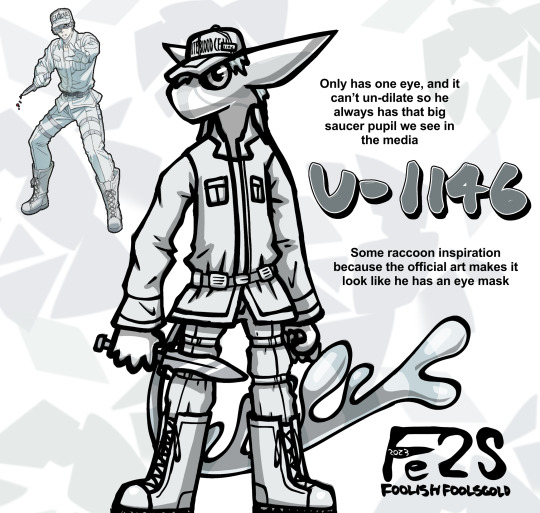
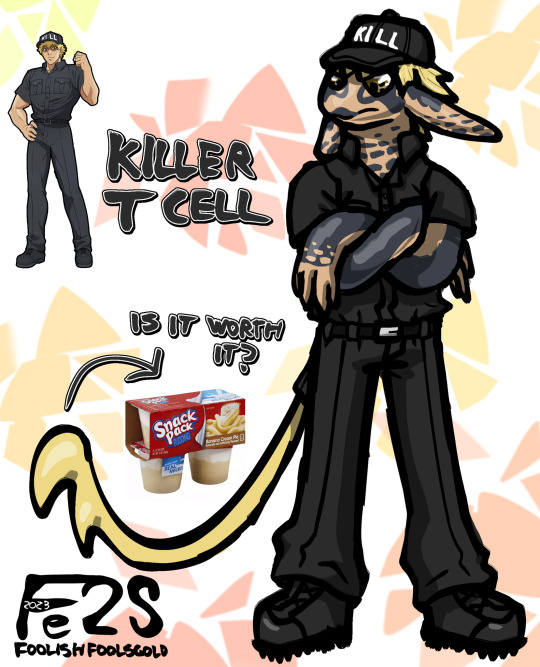



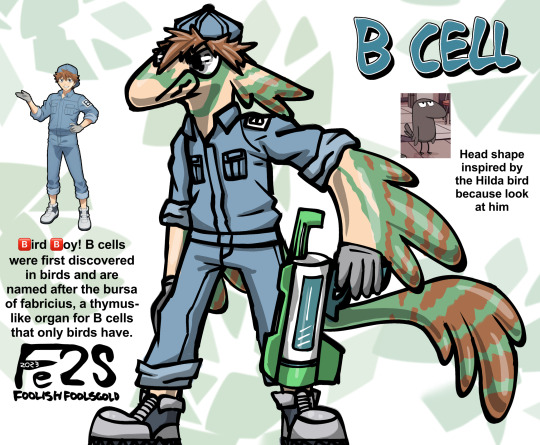
A few designs I’ve done since I had this mutated brainchild back in October. I have others like eosinophil and dendritic but I wanna redraw them. I was still learning the way of the cell creature back then lol. Image IDs under the cut
[Start ID: The first image shows the AU design for U-1146. The background is white with a gray triangle pattern. He’s wearing his usual uniform, but he has a rounded, noseless snout, long ears without holes, and his one eye that is showing has black sclera and a round silver iris. His skin, turned cell membrane, is pure white with faint gray striped that resemble the markings of a raccoon. He has a tail with the same colors, it’s long, skinny, and has multiple lobes on it. Who on the very end, and a few dorsal lobes along its length. Again, like a raccoon, the tail has those faint stripes on it. He’s standing and staring at the viewer with his one visible eye, with his left hand in a fist, and the other gripping a silver knife. There’s some text next to his head that reads: “Only has one eye, and it can’t un-dilate so he always has that big sauger pupil we see in the media.” Another text box reads “Some raccoon inspiration because the official art makes it look like he has an eye mask.” There’s a piece of this official art in the top left corner of the image for comparison, and in the bottom right, there’s my watermark.
The second image shows Killer T Cell’s design. The background has an orange-yellow triangle design. He’s standing with his usual uniform, head turned and arms crossed. He doesn’t have bones, though, so his arms look more like they’re tied in a knot. He keeps his canon skin tone and hair style, but his membrane has dark blue markings that make him resemble a peregrine falcon. He shares the basic physical features with U-1146, except his tail is thinner and only has two small lobes on the end. His tail is yellow, like his hair, and has an arrow pointing from it to a picture of a banana flavored Snack Pack pudding package, noting that his tail looks a lot like banana pudding by humorously noting “Is it worth it?” Unlike 46, T’s hazel eyes are made up of multiple pupils that coalesce like a lava lamp, and this is true for all future entries as well. Again, there’s my watermark and an actual picture of killer t for reference.
The third image shows Macrophage’s design, and a cream-colored triangle background. Macrophage has large, frilled ears, and a darker cell membrane that looks almost like light coffee. She’s wearing her normal ruffled dress, but instead of legs, she has long tentacles without suckers, built almost like Ursula. She’s covered in white patterns with ripple-like stripes and spots, resembling a cuttlefish. With her right arm and one of her tentacles, she’s holding her signature cleaver, dripping with red blood, which also stained another tentacle and parts of her dress, and the other arm is held up to her face in an “I didn’t do that!” pose. She’s accompanied by a picture of anime Macrophage and a microscope photo of a real macrophage, reaching out with its “arms” to some bacteria. There’s a text box under it that reads: “like come on I HAD to make her a sea monster, have you seen real macrophages? Look at this bitch.” Another box reads: “lots of cephalopod inspiration, octopus-like build with cuttlefish markings and frills.” A final humorous box says “it’s ok she just had to refill the ketchup at McDonald’s,” referring to the blood.
The fourth image featured NK’s design with a green patterned background, as are the following images. She keeps her skin tone and clothes for the most part, but she has a centaur-like build. Her black tank top is extended to cover her chest and has short sleeves for her first set of legs, and ends with a belt around her midsection to her green shorts. She has green boots on all four of her feet, and her tail is black with green splotches, and has lots of lobes, almost like that of a leafy sea dragon. She has army-green spots resembling a cheetah, and she’s smiling and looking confident, with her left hand in a fist. She has her saber in a sheath on her back, and a brown bag secured to her belt like a saddlebag. There’s an arrow pointing to the photo of anime NK from a text box that says “there is something about this SPECIFIC png of NK that cracks me up sm and I don’t fucking know what it is.”
The fifth image shows Helper T, who shares many basic traits with Killer T such as bipedalism and a two-loved tail. While he still has the creature features like the big ears and rounded snout, he’s race-swapped as a black man, and has dark stripes along his arms and face like a peacock. His eyes are blue, and he’s holding a cup of green tea, dropping a cookie in it. There’s a small figure showing that his hair (flagella) are each coiled rather than straight.
The final image shows B cell’s design, which has a lot of bird inspiration. He has a longer snout, plumed tail and ears, and big flat lobes along his arms that look like wings. His eyes are silver md his stripes are brown and green, patterned like that of a blue jay. He’s also holding his antibody gun. A text box reads: “Bird boy! B cells were first discovered in birds and are named after the bursa of fabrics, a thymus-like organ for B cells that only birds have.” There’s also a note that says “face shape inspired by the Hilda bird because look at him,” accompanied by a screenshot of the raven from the Netflix series Hilda. He has a simple, completely black design with a rounded face, stick-figure legs and small wings. End ID.]
#hataraku saibou#cells at work#my art#spec evo#speculative biology#speculative evolution#tw trypophobia#kinda. like with the eyes. idk just to be safe#tw cartoon blood#u1146#killer t cell#macrophage#nk cell#helper t cell#b cell#au#character design#they don’t have bones so I just tied his arms in a knot lmao#it looks better with night shift on#idk if that’s common practice for digital artists but I’d like to keep my eyes please#I just turned it off and I feel like I got flashbanged#damnit macrophage still has my old Reddit on it#I’m starting to think this isn’t what tags are for
24 notes
·
View notes
Text
starchaser reference + her pronouns update <- still up to change but you know what ithink that feels right

[id: reference drawing of Starchaser, a Nightwing with dark pink scales. She is skinny, has lean shapes and long snout and horns. Her eyes are orange with red pupils, and she has teardrop scale under her eyes. They have lighter underbelly and wing membranes, and pale, almost white horns and wing spikes. On their nose there is a small scar. First caption reads "STARCHASER she/pup/it/they" while second, close to the nose "scar symmetrical". Background is pale purple and there is white outline around her. / end id]
23 notes
·
View notes
Text
ETF is very different from the series but i kinda enjoy it?
Like, the atmosphere of the setting is way less grim and macabre, and we even had some very aww emotional moments (because it's a film and films have a different episode structure). And well, i'm a sucker for happy endings, so it was nice to see Professor Membrane and Gaz have some touching moments with Dib. (i just wanna them to heal ok) (it's a start at least)
Basically i like to see the differences between the series and ETF as if they were the consequences of the timeskip.
Gaz very explicitly worrying about her brother's well being + Dib imposing himself on his father because both of them (Gaz and Dib) are more mature, the sky is more beautiful because idk maybe it's some invention the Professor made to help the Earth??
ETF gives me a hopeful, somehow healing and comforting atmosphere, and it feels nice
But then again, i'm a sucker for happy endings and healing
Now about the designs, i liked the colors in general, but it's my most vibrant and "happy" color style.
I really liked Dib's ghost shirt, since i study character design a lot, this says a lot about him. I just didn't like the red sneakers so in my re-imagined version i draw him with a black all star (i like to leave the goth boots for when he's older). And now he has more hair lol (i like to leave the undercut for when he's older too)
Gaz was the one with the biggest redesign, and just like Dib i liked her new shirt. But in my re-imagined version i mix her design from the series with ETF, i like to imagine her with a long-sleeved striped shirt underneath.
I don't have much to say about Professor Membrane's redesign, but i liked the small changes, he's not so skinny anymore and has more hair too
Also ETF gave me things i always wanted to happen:
- Alternative realities
- Professor Membrane being a good present father
- Touching moments between the Membrane family
- Zim discovering the mission was a lie
- Zim (almost) winning for real
- ANIME IZ!! (my 13-year-old self can rest in peace)
- The trial scenario
So yeah, i really like the movie, i had a lot of fun.
It's a great film to end the IZ franchise to me.
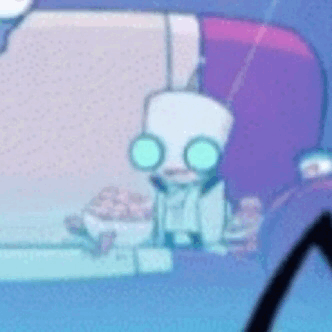
also tell me your opinions! i wanna hear it
50 notes
·
View notes
Text
Wet Beast Wednesday: spiny softshell turtle
It may be neither Flat Fuck Friday nor Turtle Tuesday, but because this is my series and I can do what I want, I'm talking about a very flat turtle. The spiny softshell turtle (Apalone spinifera) is the most widely distributed and possibly the most common softshell turtle in North America. Its range covers most of the Eastern half of the USA and stretched into Canada and Mexico. There are 6 subspecies separated by geography and hybridization can happen in places where their ranges cross. Hybridization has also been known to happen with the Florida softshell (Apalone ferox). The subspecies are the northern (A. s. spinifera), gulf coast (A. s. aspera), Texas (A. s. emoryi), pallid (A. s. pallida), Guadalupe (A. s. guadalupensis), and black (A. s. atra) spiny softshells.

(Image: a spiny softshell turtle seen from above and to the side. It is a turtle with a wide, flat shell. Its head and one foot are visible. The head is skinny and has an elongated nose. The foot is wide and flat, with webbed toes. The turtle is an olive green with black dots on the skin, yellow stripes on the face, and dark spots on the shell. End ID)
The thing that makes a softshell a softshell is the lack of keratinized scutes on their shells. This makes the shells smooth and leathery. The center of the shell has a layer of solid bone user it, but this does not extend to the edges of the shell, making it less rigid. Softshells are the fragile speedsters of the turtle world. Their shells are a lot lighter and often more streamlined, allowing for faster movement both on land and in water, but they provide less defense. Spiny softshells have spiny projections along the front edge of the carapace (upper shell), with males having more than females. They are some of the largest North American freshwater turtles. Females can reach a carapace length of 54 cm (21 in) and 11 kg (25 lbs) while the smaller males max out at about 25 cm (10 in).
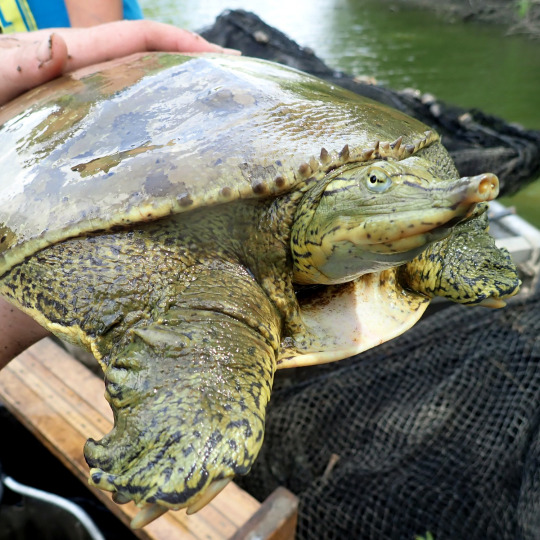
(Image: a spiny softshell being held by a person, seen from the front. The leading edge of the carapace is visible, showing off the small spines. End ID)
Spiny softshells have wide, flat, paddle-like feet with three claws and an elongated nose that acts like a snorkel. The turtles are born a bright olive color with striped faces and dark spots on the shell. Males keep their juvenile coloration for their entire lives while females grow darker ad lose many of their markings. It can be very difficult to tell females of different subspecies apart, while males and juveniles can be distinguished by their markings. Smooth skin and highly vascularized membranes in the cloaca, mouth, and throat allow the turtles to breathe by diffusing dissolved oxygen from the water into their blood.
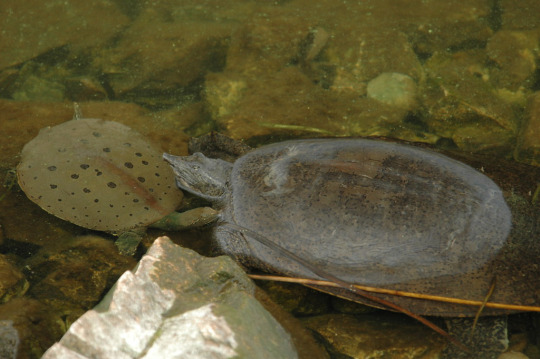
(Image: a male and female spiny softshell facing each other. The male is less than half the size of the female and has an olive colored shell and skin, with dark spots on the shell. The female is a uniform muddy brown color. End ID)
Spiny softshells are generalists able to live in a wide range of habitats. They prefer streams, rivers, and ponds with muddy or sandy bottoms and high visibility, but can live in most freshwater habitats. Softshells are diurnal, spending their days basking and feeding. Being turtles, they are ectothermic, meaning their body temperature matches the surrounding temperature. To warm themselves up, the turtles bask in the sunlight. They can often be found resting on exposed rocks, logs, sandbars, or shorelines. While not particularly social animals, the turtles will bask in groups. When threatened, softshells will attempt to swim away and/or bury themselves. In the right sediment, a softshell can bury itself in under a second. Because their shells are less rigid, softshells have to actively defend themselves when cornered and will bite and scratch. People have to be careful when handling them. They brumate (that's hibernation for reptiles) during winter. While brumating, they bury themselves underwater and slow their metabolism and oxygen requirements. In this state they can fully sustain themselves on oxygen absorbed through their skin or special membranes.
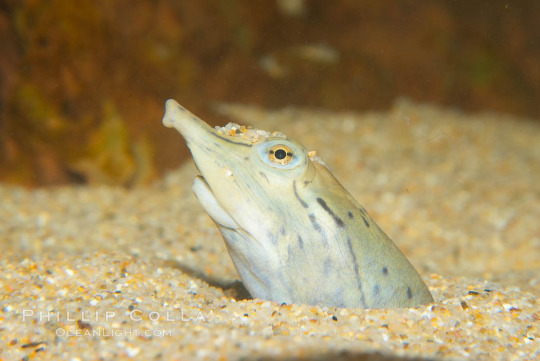
(Image: a spiny softshell turtle buried in its hunting strategy. Only the head is visible above the sand. End ID)
They are primarily carnivores and will eat anything that can fit in their mouths. Aquatic insects, crayfish, worms, amphibians, mussels, snails, fish, and more are on their plate. While capable of fast swimming, they are not pursuit predators. They employ two primary hunting strategies. The first is to bury themselves in the sediment and wait for prey to come by. The second is digging in the sediment to find worms and other animals. Fish have been known to follow digging turtles around to feed on animals unearthed by them.

(Image: a spiny softshell in captivity. It is swimming at the surface of the water in a tank, amongst artificial leaves. End ID)
Spiny softshells mate in spring. Males attempt to woo females by swimming over to them and bumping heads together. The male then sits on top of the female to mate. Unlike most species of turtles, the males do not grab onto the female's shells during mating. Eggs are laid between summer and early fall and will hatch next spring. The female will dig a nest in sandy or gravelly banks and bury the eggs once they have been laid. She provides no further care. Females will typically mate multiple times each year, with each mating having a different nest. The juveniles take 8 to 10 years to reach sexual maturity and they can live up to 50 years in the wild. Many turtles determine sex by the temperature the eggs are incubated in. This is not the case with spiny softshells, who have genetics based sex determination.

(Image: a group of 5 juveniles. The photo focuses on two who are sitting next to each other. One has its front right leg on the shell of the other. They have similar coloration to an adult male. End ID)
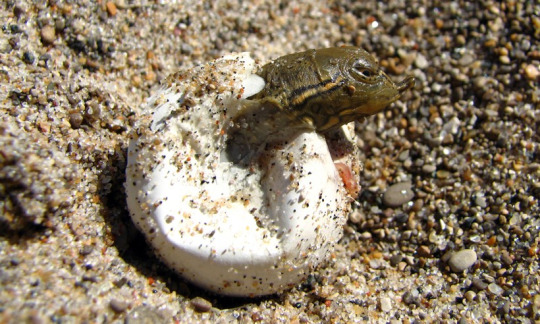
(Image: a newborn emerging from its egg. The egg is round and white, looking like a ping-pong ball. Only the head of the turtle has emerged. End ID)
Most subspecies of spiny softshell are classified as least concern or near threatened by the IUCN, meaning they are not in danger of extinction. The exception is the black spiny softshell, also known as the Cuatro Ciénegas softshell, which is critically endangered. The primary threats to the turtles is habitat loss due to human activity. Adults have no natural predators outside of the Florida and adjacent state populations, which are prey to alligators. Juveniles are eaten by a variety of animals including fish, snakes, raccoons, and herons. People will also eat the adults. Because it can take a whole decade for juveniles to become reproductive, losses in population take a long time to replace. They have been introduced to areas outside of their native range, most notably the western USA. Most of these introductions are due to people releasing pet turtles into the wild.
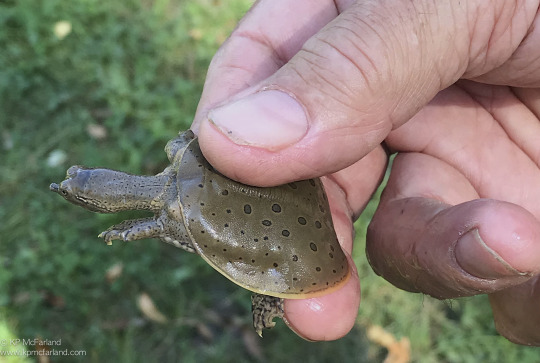
(Image: someone holding a juvenile. The shell is 2-3 times the size of the human's thumb. End ID)
#i typoed it as softhsell more times than I care to admit#wet beast wednesday#turtle#turtles#softshell turtle#soft shell turtle#spiny softshell turtle#reptile#biology#zoology#ecology#animal facts#freshwater ecology#aquatic biology#informative#educational#image described#turtle power#herpetology
76 notes
·
View notes
Text

Tau body type headcanons:
The fire warriors are bred for battle so reproduction is a function. as a result there is no need for mate attraction and they have very little differences between the sexes. A male and female fire caste tau is almost indistinguishable, except for the few female fire caste members born with the Y-shaped face slit.
The earth caste, air caste and ethereal caste have different face slits based on birth sex. I-shaped for male, Y-shaped for female.
The water caste have the most difference between the sexes, having evolved to resembled the species they spend the most time with. this is to seem more palatable to them. The example here is for water caste members adapted to humans.
Fire caste members have a very muscular body and are fast. Earth caste members are shorter and heavier, closer to a body builder in stature. They are built for stamina and strength, not speed. The water caste has softer skin, far thinner than the usual leathery texture of other castes. They're closer to humans in height and build. The air caste is fragile and thin due to their hollow bones. They have adapted to spend their lives in space. They have a vestigial skin membrane. This is a remnant of the membrane wings they had before the tau took to space. The ethereal caste members are skinny yet fit, with greyer skin. Their greatest difference is the red gem-like organ in their forehead.
#thaoslikespie#warhammer 40k#warhammer fanart#warhammer 40000#warhammer 40k fanart#warhammer 40k art#warhammer art#wh40k#wh40k art#tau#warhammer40k tau#warhammer tau#tau empire#tau fanart#40k#40k fanart#40k tau
30 notes
·
View notes
Note
Hi, ho, if you would rate Inteleon it would please me quite so! :)

Inteleons are an interesting case. As the final stage in an evolution line commonly used as first partner pokémon in the Galar Region, they are known to get along well with humans and are receptive to training. However, they are also incredibly deadly. This is a super spy in the form of a pokémon, after all. While inteleons may make good companions for some owners, their size and capabilities drag them down from a resounding approval.
Like I said, their size might be a bit of issue. They’re pretty lightweight, skinny, and skilled at maneuvering around, which means that space isn’t necessarily going to be an issue. But, I must admit it would be rather strange to have a humanoid pet that’s taller than me (not taller than everybody, but taller than me, the writer). It may creep some people out. They may be a bit difficult to handle when it comes to transportation. It’s a whole thing. But not necessarily a deal-breaker.
We don’t have very much data about the behavior of inteleons at all. Much of what I can say on the topic is speculation based on their biology. Inteleons are, from what I can tell, skilled hunters. Not only can they slink around with ease, they can also glide around with a special membrane on their backs (Sword). Inteleons can expel water from their fingertips with immense speed and accuracy: a nictitating membrane in their eyes allows them to “pick out foes’ weak points…[and] precisely blast them with water that shoots from its fingertips at Mach 3” (Shield). Mach 3. That is wicked fast. From the research I’ve done, that’s faster than some speeding bullets. I’m not an expert or anything but… that’s gonna be lethal in a lot of cases, right? From this, I can intuit that this probably evolved as a means of taking down prey from a distance, making inteleon a predator.
This lethal capability is reflected in inteleons’ signature move, Snipe Shot. Thankfully, there isn’t much else to be concerned about when it comes to their moves, except perhaps the heavy-hitters like Liquidation and Hydro Pump. It’s that Mach 3 sniper shot that really drags down inteleon’s score. Sure, they’re friendly to humans and receptive to training. So are dogs! But if a dog had a gun permanently built into their paws… even the best trained dog would make people a little nervous.
Inteleons are really a mixed bag. Friendly, but evolved to kill. Lightweight, but the height and shape of a human person. I’d say it’s really up to the reader to decide on this one. As far as the score goes, however, inteleon gets a solid C rank.
46 notes
·
View notes
Photo
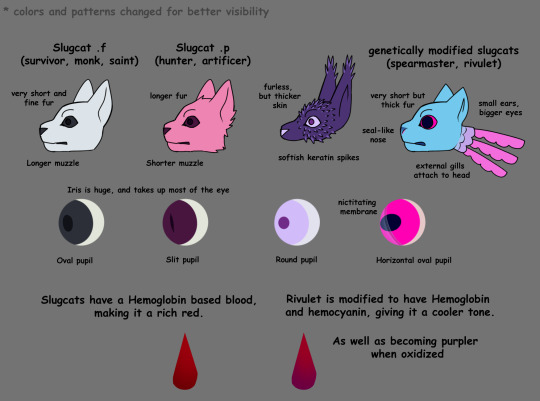
i’ve been thinking how slugcats work a lot. my rambles will be under the cut
i’ve said before in other posts, but i hc there’s two types of slugcats (whether different species or just subspecies i’m unsure) and so they‘re showcased here. i’ve given them names to differentiate when talking about them.
Slugcat Felis is a more omnivorous and opportunistic slugcat. examples would be survivor, monk, and saint (a bit).
Felis slugcats have very short, and fine fur. it’s a lot more sparse. (like how the peterbald cat breed is) they have a longer muzzle in comparison to panthera slugcats, and have weaker jaw strength because of it.
They also have oval pupils, not fully round but not slit either.
Slugcat Panthera is more carnivorous and predatory. ex, hunter and arti.
Panthera slugcats have a longer coat of fur, but it’s still generally short. More akin to how an actual short-haired cat is. They have a short muzzle, making their bite-force stronger. They also have slit pupils, although it becomes round when dilated.
General slugcat traits include,
-Eyes, nose, teeth, lips, and claws all being of similar colors.
-Large thick tail for extra fat storage
-Muzzle whiskers and eyebrow whiskers
-Two fingers, one opposable thumb, and three toes
Spearmaster is a pretty special case, as they’re heavily modified. First of all, they have no lower jaw or upper digestive system. Their skull is also modified to be smoother where their mouth would be. Their torso and neck is skinny, causing them to weigh a lot less than others
Spearmaster also has long pointy ears, as it would make their expressions a lot more obvious and clear. They have small rounded spikes of keratin all over, somewhat similar to scales in a way. Their skin is a lot thicker than other slugcats, as they have no fur to protect it. Their pupils are fully round, whether dilated or constricted.
Rivulet is also modified, but not as extremely. Large eyes and nictitating membrane help see underwater. Their pupils are larger than average, and are horizontally oval (but become round when not constricted).
Riv’s external gills are attached to their head, rather than the neck or jaw. As this makes the bloodflow to the brain much quicker. They have small ears and a seal nose, modifications to prevent water going where it shouldn’t.
Their fur is very short, but incredibly thick and oily. This helps them retain heat and prevent water sticking to them (like otters and seals!).
In their blood, is hemocyanin, as well as hemoglobin. There is more hemoglobin than hemocyanin, as it’s more efficient in most scenarios. However, hemocyanin is more efficient than hemoglobin in cold underwater environments with low oxygen.
i would’ve included saint and gourmand, but i was tired after drawing rivulet so i didn’t include them. maybe in another post?
#pinemartart#rain world#rain world downpour#rainworld#rw downpour#slugcat#rw survivor#rw hunter#rw spearmaster#rw rivulet#rw slugcat#rain world headcanons#HELPPP SOMEONE HELPPP MEEEE that was a lot of writing#anyways i'm very tired now. it's only like 5pm but i'm going to pass out. or something#i have reasons for my choices but they're not all explained here.... but whatever. go guess or something#or ask me about it smile#sorry if this looks bad on mobile i'm doing this on desktop#anyways feel free to go into my askbox and talk to me about this kind of stuff. i love ideas
89 notes
·
View notes
Note
What kind of art style makes you not care about how realistic a creature desing is?
the more it leans into a simplified cartoonish style, the more i can handwave things like weird proportions. the further it leans into realism, like near-photographic realism, the more i view it with a critical eye.
like, I'm not going to look at the old Dragon Tales cartoon and say "wow those dragon designs are so unbelievable, there's no way those tiny wings can be useful!"

(image description: a screencap showing several cartoon characters two human children and three dragons, one of which is a two headed dragon. the style is very simple and squishy with vibrant colors and minimal shading. end description)
but then on the other hand, i can't look at the Game of Thrones dragons, which are intended to look Real and fit in with all the live action stuff, and say "oh it's fine that their wing membranes don't extend far along the body, the giant spoon shape is just an artistic choice" because these dragons exist in a story that seems to pride itself on realism and it feels weird to me that they didn't put more effort into making their dragons look more like living animals instead of just the generic cool spiky dragon with little consideration of how wing shapes work or how heavy all those cool looking spiky bits are. also they have the thing where the dragons' chests are like enormous but they have a weirdly skinny belly. i am begging, why do people keep designing dragons with the bodies of greyhound dogs. that body shape is for high speed running with a very flexible spine, not for giant flying lizards. (also why do their teeth look like this, is that actually useful or just to make them look more freaky)



(image description: screencaps of the dragons in Game of Thrones. they have broad wings with a skinnier membrane where the wing meets the body, large round chests with a narrow belly, teeth that look crooked and multi layered, and bodies covered in very rough spiky scales, horns, and spiked fin shapes. they have been rendered in a photo realistic way to fit in live action scenes. end description)
i have only seen clips of Game of Thrones, it's not my type of fantasy. i don't always hate spiky dragons. we have real life lizards that are also incredibly spiky. but sometimes it just feels like it's being done in excess and makes them look more like they've been roughly carved out of stone rather than being living animals.
but anyway, yeah i think that shows the range of extremes from cartoon style into full realism.
29 notes
·
View notes